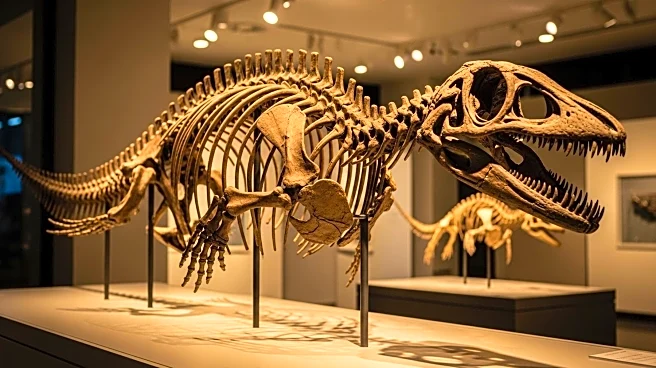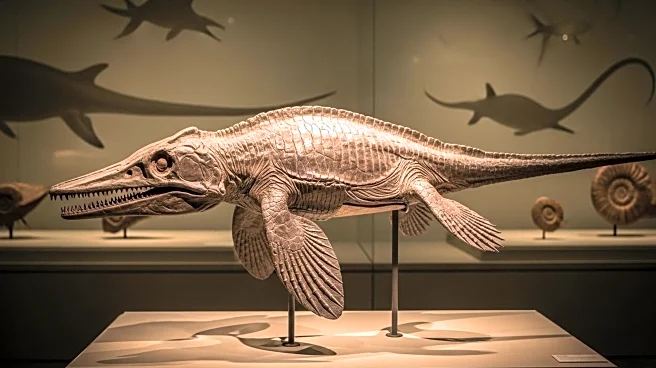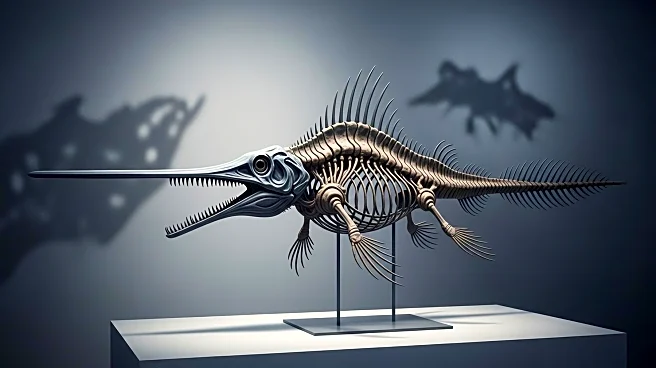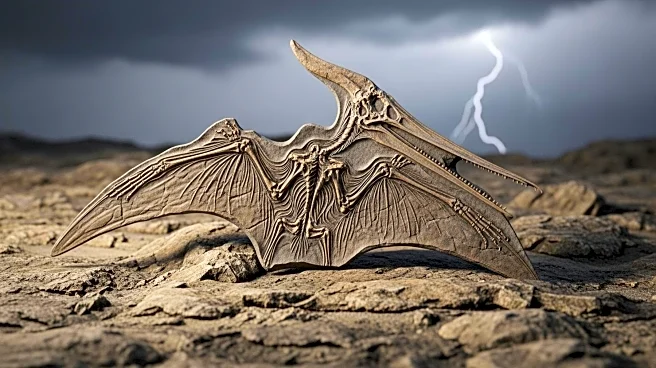What's Happening?
An international research team from Switzerland and Germany has described a new ichthyosaur species, Eurhinosaurus mistelgauensis, based on fossils curated at the Urwelt-Museum Oberfranken in Bayreuth, Germany. The fossils were excavated from the Mistelgau clay pit, a site known for its dense accumulations of Jurassic cephalopod remains. The newly identified species exhibits a pronounced 'overbite' similar to modern swordfish, along with robust ribs and unique features in the skull-neck joint. The discovery highlights the significance of the Mistelgau locality in understanding Jurassic marine ecosystems.
Why It's Important?
The identification of Eurhinosaurus mistelgauensis underscores the importance of fossil collections in understanding ancient marine ecosystems. This discovery provides rare insights into a time period that is scarcely documented worldwide, contributing to the broader understanding of marine reptile evolution during the Jurassic era. The findings may also inform future studies on the ecology and life history of ichthyosaurs, offering potential clues about their behavior and interactions within their environment.
What's Next?
Further studies on the Mistelgau material are planned, including analyses of injuries preserved in the ichthyosaur skeletons. These investigations may shed light on the ecology and life history of these ancient marine reptiles, potentially revealing more about their interactions and survival strategies during the Jurassic period.










